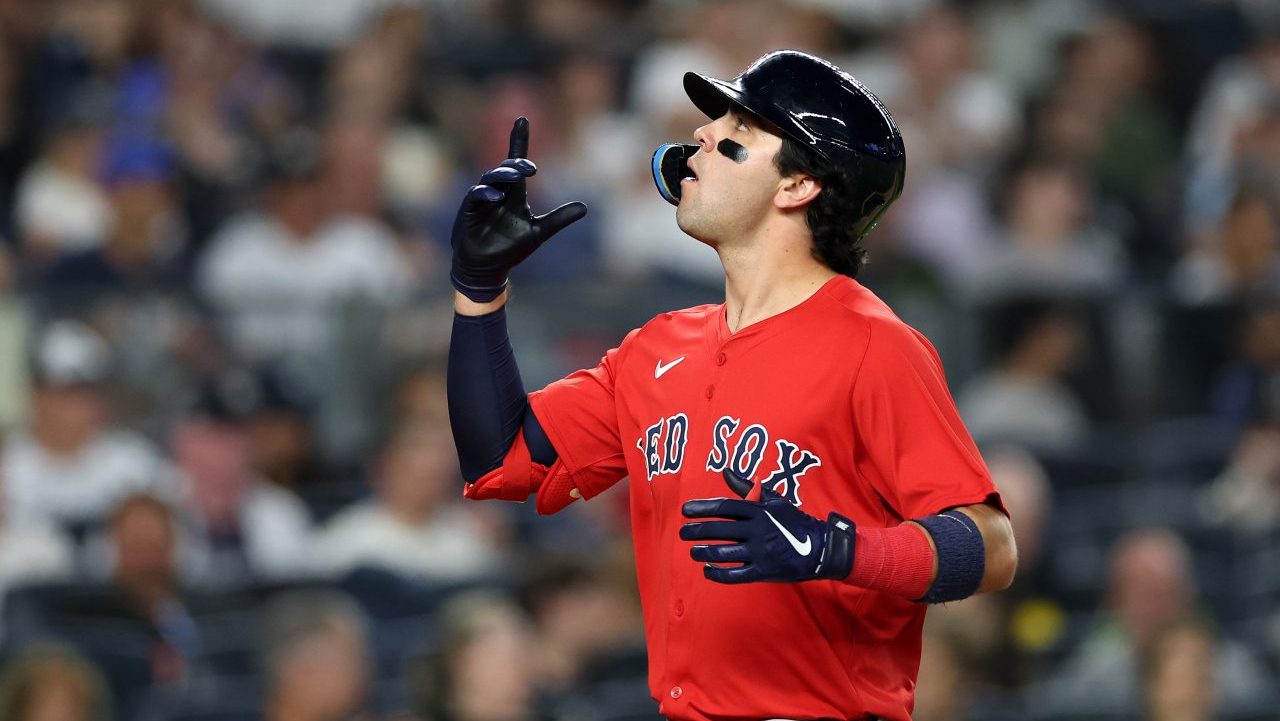On April 3, Masataka Yoshida took an elevated 96 mph fastball from Pirates right-hander Johan Oviedo and slugged it into the Monster seats for his first big-league home run. Caught up in the moment, some of us raced to our computers to declare him "the real deal."
The ensuing week has doused that euphoria.
Considering all that Yoshida must learn -- new country, language, culture, teammates, ballparks, opponents, umpires -- it's little surprise that he has already encountered a slump. The question is whether it's a sign of something lasting, or simply an inevitable blip en route to justifying the team's $ 105 million expenditure.
With our All Access Daily newsletter, stay in the game with the latest updates on your beloved Boston sports teams!
Tomase: Duvall injury puts Red Sox' poor team-building in spotlight
The stakes are high. The Red Sox eschewed similarly priced All-Stars like catcher Willson Contreras to roll the dice on Yoshida, and they're batting him cleanup, even though he only stands 5-foot-8 and never hit 30 homers in Japan. It's no stretch to say Chaim Bloom's future hinges on Yoshida's production. Even early struggles represent a concern. So what should we make of him?
Let's start with the good. As advertised, Yoshida knows the strike zone. Nine games into his big-league career, he owns twice as many walks (six) as strikeouts (three). That kind of discipline will play no matter what else he does, much like an 80 percent NBA free throw shooter can probably be counted on eventually to shoot well from the floor, too.
Though we've seen a little bit more chase from him recently, particularly on changeups away, he still looks to be in command of the strike zone. That's a solid baseline for success.
Boston Red Sox
Find the latest Boston Red Sox news, highlights, analysis and more with NBC Sports Boston.
Now for the concerns. Outside of his home run, Yoshida has hit pretty much everything on the ground. The launch angle revolution may be subsiding as clubs reemphasize bat-to-ball skills, but Yoshida is an extreme groundball hitter, and most of his contact has been weak.
His groundball rate of 71 percent is unsustainable even if his name were Ichiro, which it is not. The Red Sox signed Yoshida because they believed he'd hit for power, and you can't leave the park if the ball never leaves the ground. When Yoshida is struggling, as he did after his homer against the Pirates, he's a 3-1 machine grounding constantly to first.
That's a problem, because the Red Sox expect Yoshida to help replace the production of All-Star shortstop Xander Bogaerts. As a means of comparison, Bogaerts only topped a 50 percent groundball rate once in his career, and it was during his .320 season in 2015 (53 percent) that even Bogaerts described as "empty" because it only included seven home runs.
That adjective also describes most of Yoshida's contact at the moment. Of his eight hits, one never left the infield, one flared to center, and one was a seeing-eye single that deflected off the second baseman's glove.
Pitchers have challenged him primarily with fastballs, and though he has recorded all but one of his hits against heaters, his expected average of .213 highlights the generally weak nature of his contact. As it is, he has only barreled up one ball all season. That's not what the Red Sox paid for, and it's certainly not a recipe for batting cleanup.
There have been some positive signs. After looking jumpy in the box against the Pirates and lunging at pitches away, Yoshida reestablished a stable base in Detroit, when he recorded two hits in one game and three walks in another.
He then singled sharply to left in Tampa on Monday for one of Boston's three hits with the kind of approach we expected to see more of -- punching outside fastballs the other way and turning on anything off-speed inside.
It was probably too early to declare Yoshida the real deal a week ago, and there's no sense racing to bury him now. We simply don't know what Yoshida is yet, but the answer may very well shape the future of the franchise.


